The Many Hues of Tourmaline
What’s your favorite color? Pink, blue, green, or maybe black? There’s a Tourmaline for that! Tourmaline is one of the most diverse gemstones, and it’s also pretty versatile. When it was first “discovered” in the 1500s, it was mistaken for Emerald. Later on Pink Tourmaline was mistaken for Ruby. But we won’t blame anyone. After all there wasn’t much gemology knowledge in those times. It wasn’t until 1703 that it was properly recognized and named. Today it’s still super popular and can be loved in many different colors!
So what makes Tourmaline then?
Given that there are many different types of Tourmaline, you can’t identify it by color alone. Its classification comes from its makeup and formation instead. If you’ve been following our blog, you know there’s always a bit of science! So let’s jump into a little gemology.
In hot magma, there are often aqueous solutions that are rich in elements like silicon and iron. When the magma cools, these element dense waters begin to crystallize and form what’s known as pegmatite rock. There can also be mineral-rich rainwater involved, which fills the cracks in the magma, contributing to the pegmatite formation. The pegmatite can contain several different crystals, including Tourmaline.
Tourmaline always contains boron. It also contains silicon and aluminum and may contain sodium, iron, magnesium, calcium, and lithium. Don’t worry; there’s no pop quiz! It’s just important to know that the combination of elements present determines the color of the Tourmaline. For example, manganese is what gives Pink Tourmaline its color. Tourmaline that is high in iron will usually be black or a very dark brown or blue.
Due to the nature of Tourmaline’s formation, Tourmaline usually has a long rectangular crystal structure. You’ll often see Tourmaline gemstones cut to reflect their natural shape, but they can also be carved into other shapes. The classic “Easter egg” shape is also known as cabochan and is also quite popular. We like to work with a wide variety, including unique and rarely seen shapes.
One gemstone, many colors
It’s fascinating enough that Tourmaline can be found in all different colors. But did you know that individual Tourmaline gemstones can have more than one color present? Gemstones that display more than one color are known as bicolor or less commonly, parti-color. Sometimes a Tourmaline gemstone will display different colors based on how the light reflects off it. It truly is a unique gem!
The most common color of Tourmaline is black, while the rarest most sought-after color is a neon blue-green known as the Paraíba variety. One of the most interesting color combos is known as Watermelon Tourmaline, and it’s exactly what it sounds like. The inside is pink, often a rich ruby color, but sometimes lighter. The outside is green, and there can even be a white “rind” between the pink and green.
This gorgeous Amáli necklace is carved out of Watermelon Tourmaline and looks just like a hard candy. You’ll have to remind yourself not to eat it!
Tourmaline’s revered metaphysical properties
Tourmaline is not just diverse in color, but also diverse in its metaphysical properties. Yogis will love Black Tourmaline as it’s known for grounding and balancing powers. It also protects against negative energies. This is a perfect stone to keep around while you’re meditating.
Pink Tourmaline symbolizes love and compassion and is said to help the wearer have an open heart. If you’re a healer trying to be more compassionate, wear Pink Tourmaline. It’s also great to have if you are trying to promote communication in your relationships. Watermelon Tourmaline has the same powers as Pink Tourmaline but also promotes joy and laughter.
Orange Tourmaline stimulates creativity and sensuality, while Yellow Tourmaline promotes personal growth. Both of these are great for artists and entrepreneurs.
Some people like to collect one of each color, as you really can find Tourmaline in every color of the rainbow. Each one represents a different chakra, so altogether they are quite powerful.
Protecting Your Tourmaline
For a stone that’s gorgeous, grounding, and protects you from negativity, we’re sure you want to protect it too! Here’s a few tips to keep your Tourmaline looking its best.
- Keep it out of the water. Tourmaline is not water-soluble, meaning it won’t dissolve or fall apart in water. But too much water can severely damage the stone, so be sure to take it off when swimming or showering.
- Avoid excessive heat. Like many of us, Tourmaline does not like excessive heat or thermal shock (abrupt change in temperature). You’ll be fine to wear it most days. But if you’re enjoying a long week at the beach or out on Safari, you should probably leave your Tourmaline at home.
- Avoid hard surfaces. Fortunately, Tourmaline is a 7-7.5 on the Mohs hardness scale, so it actually stands up to scratching better than many gemstones. To be safe though, it’s best to keep it in its own box or in a separated jewelry case. This will keep it from scratching up against other stones and surfaces. Also be careful when packing it for vacation or while doing manual labor.
- Avoid chemicals and ultrasonic cleaners! Tourmaline may be a durable gemstone, but it does not stand up well to chemicals or ultrasonic cleaners. In fact, many gemstones don’t do well with ultrasonic cleaners, so always do your research before using them.
Tourmaline is suited for everyday wear, but with caution. It’s not as durable as a Diamond, for example, so you may not want to choose it for an engagement ring. But you can certainly wear Tourmaline earrings or necklaces every day. Just be careful of those extreme temps and excess water!
How to Style Your Tourmaline
Time for our favorite part! If you’ve been following our blog, you know we love to show you examples of different gemstones and give you ideas on how to style our pieces. Tourmaline is especially fun, because we have such a variety of Tourmaline jewelry.
We try not to play favorites, but this carved Tourmaline ring has so much personality! At first glance, it appears to be an Autumn leaf. But a closer look reveals an adorable fish in motion. It’s only fitting since this shade of Tourmaline represents creativity. This is a staple piece for someone whose style is a little artsy. You could wear it with a silk wrap dress or even a pair of denim overalls.
If you want something a little more grand, check out this absolutely mesmerizing Tourmaline necklace. The longer you look at it, the more detail you see. The rich colors are so grounding, and they really pop against our 18k gold. Wear this one with a solid colored V-cut dress or blouse; a dark color like chocolate brown would be a gorgeous complement.
Hopefully this gives you some inspiration on how to choose your next Tourmaline piece and how to wear it with confidence! As always, we like our Amáli shoppers to be informed. Join our newsletter and follow us on Instagram for more deep dives on your favorite gemstones.
Recommended Articles
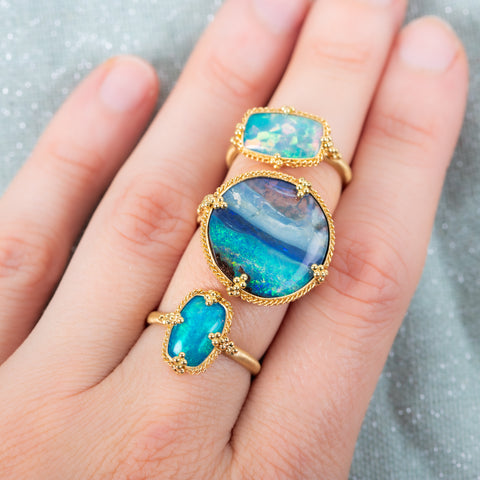
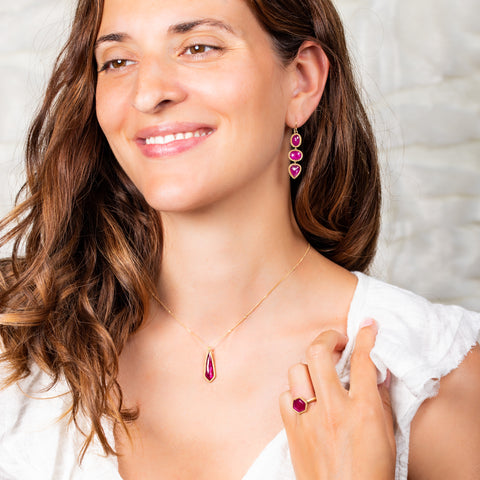
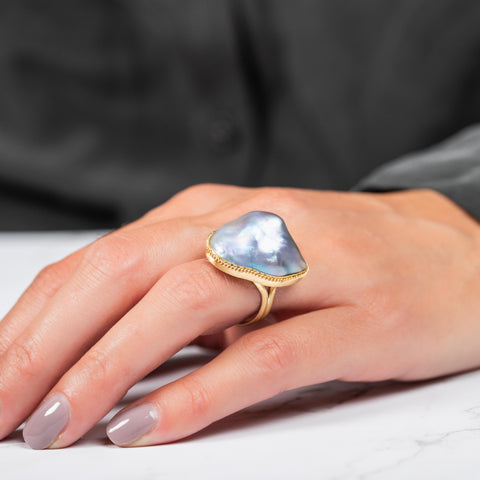

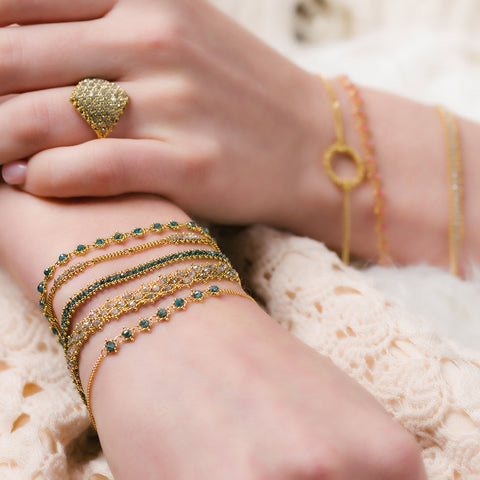
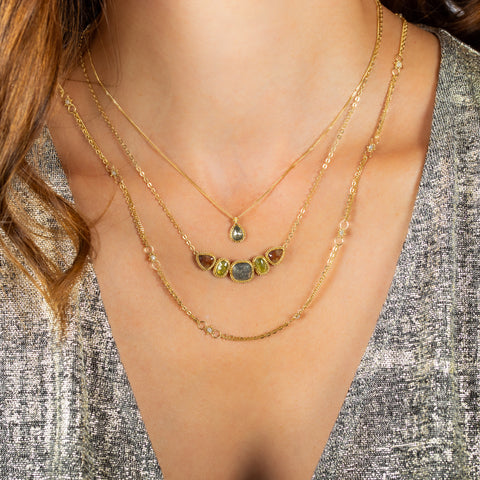


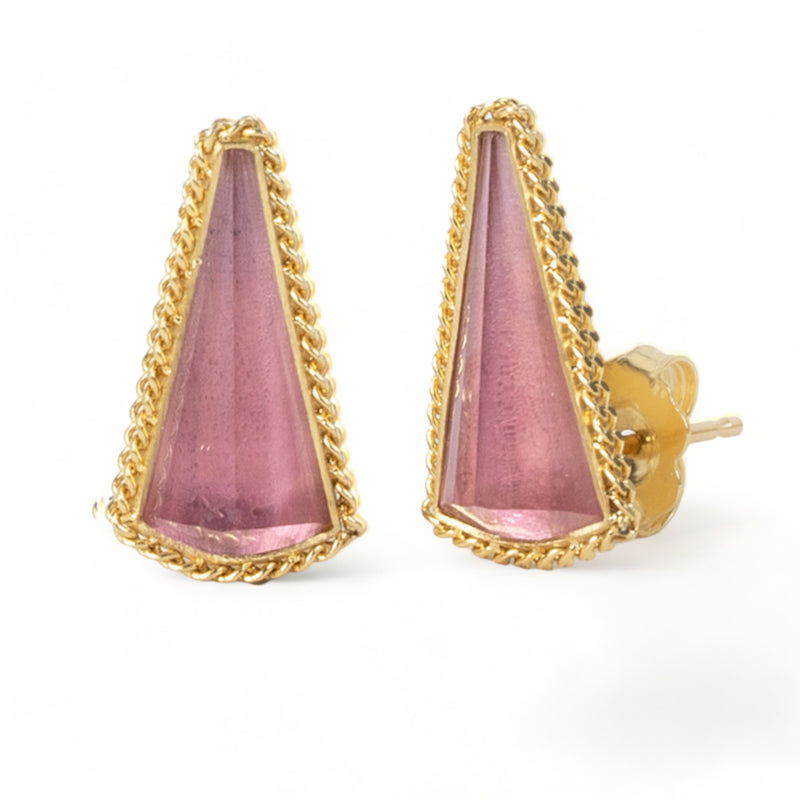
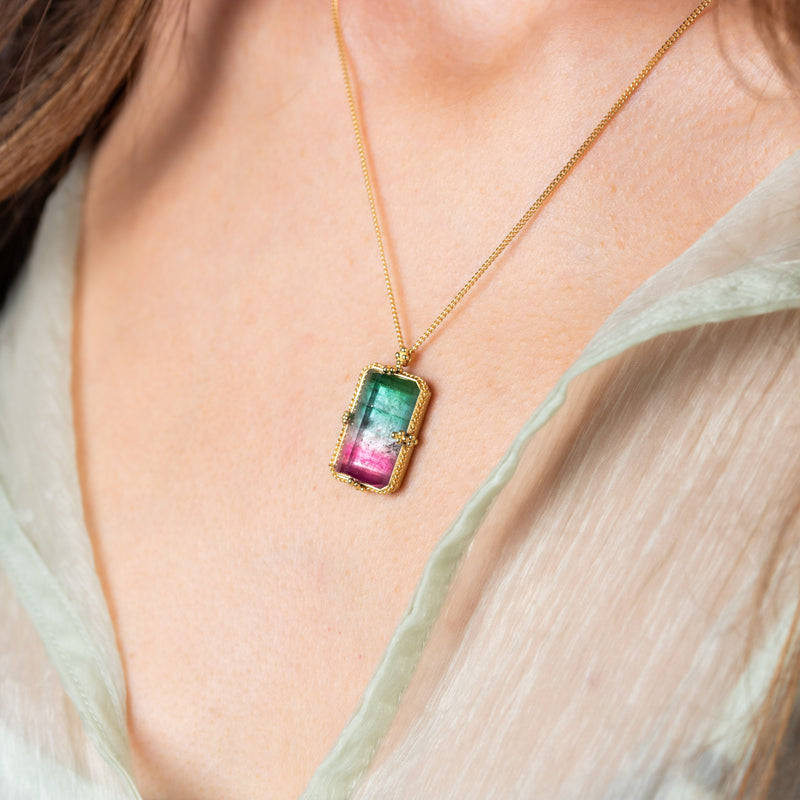
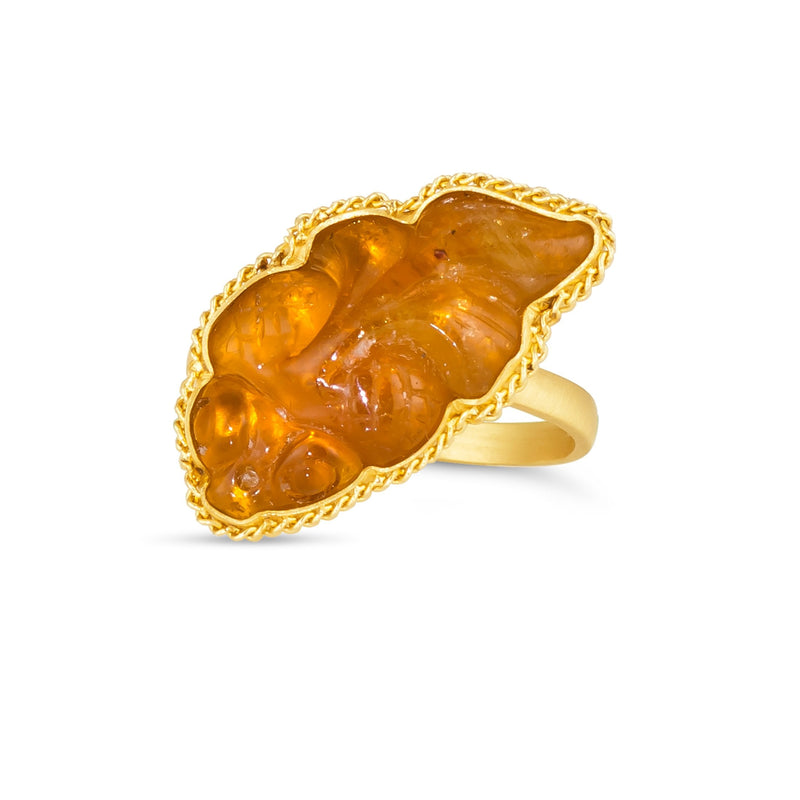
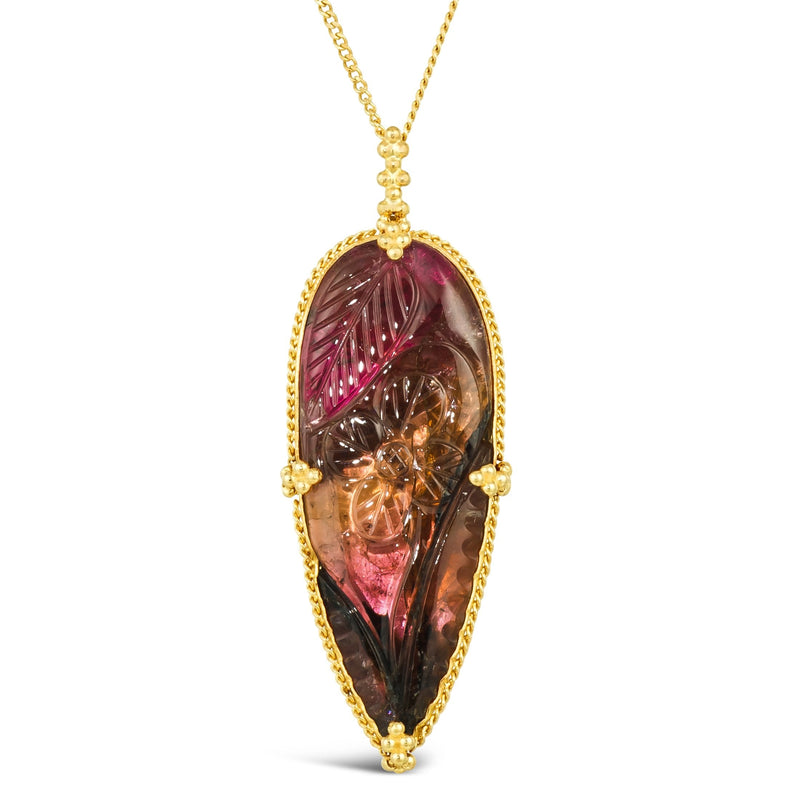

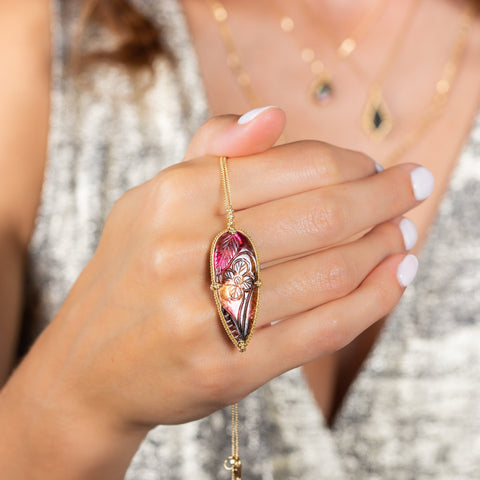

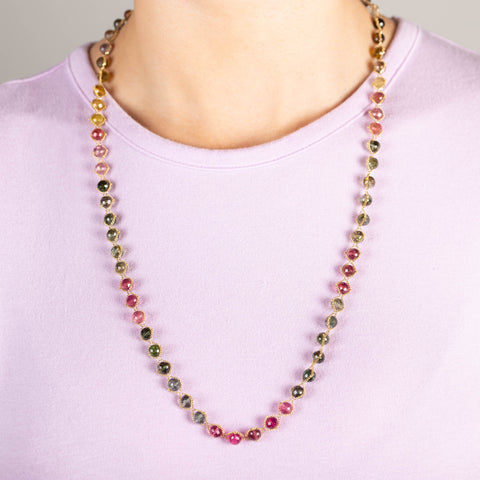

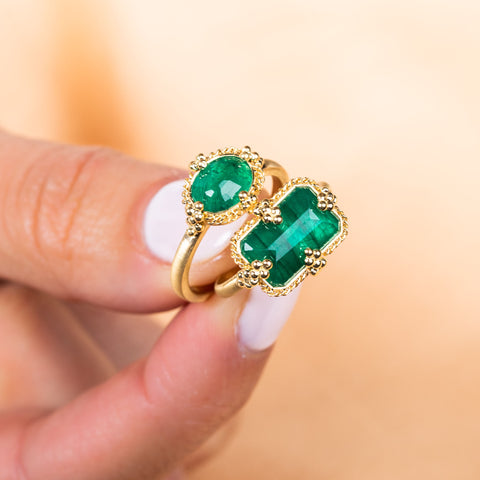
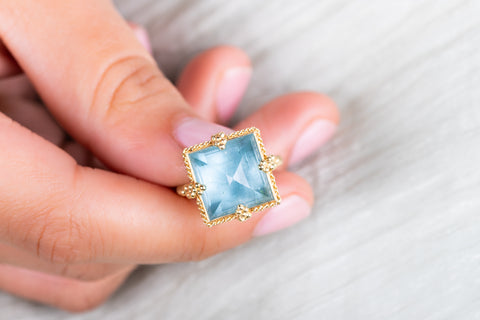
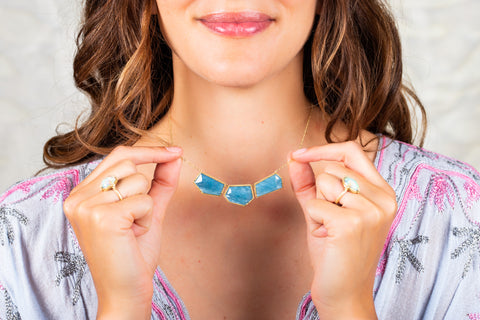
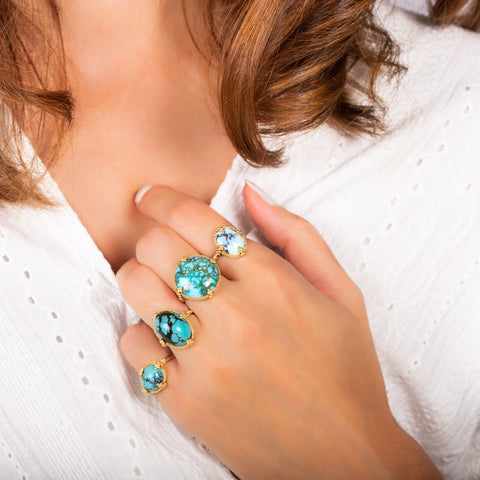
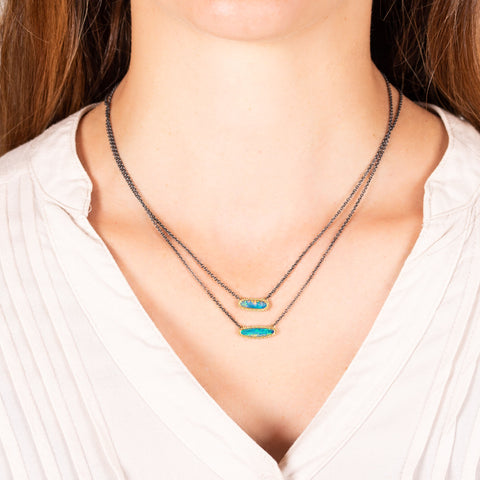
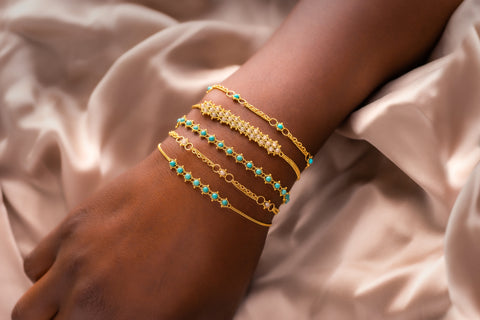
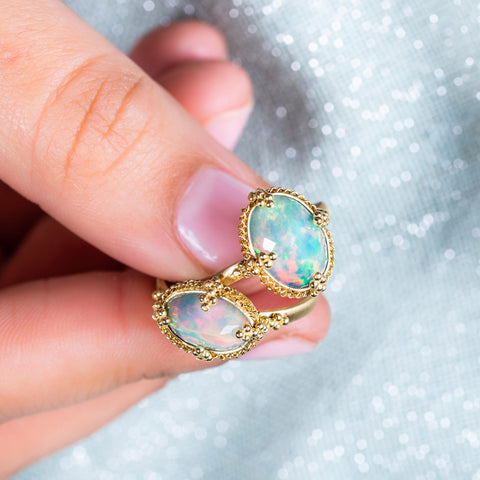

Comments (0)
There are no comments for this article. Be the first one to leave a message!